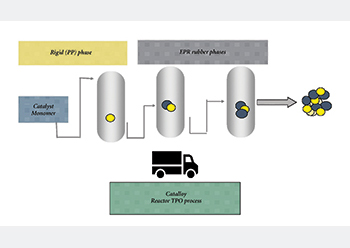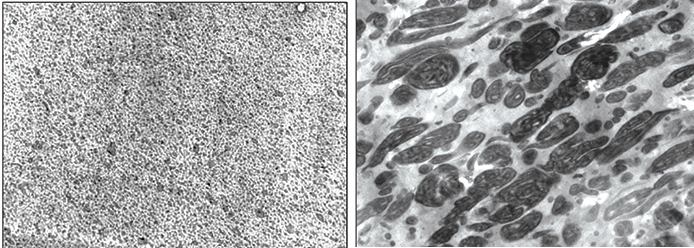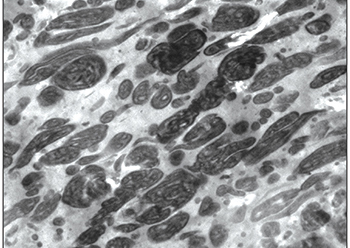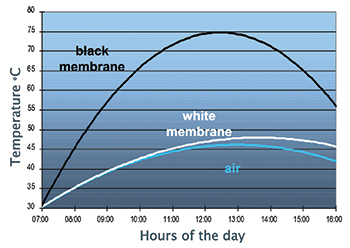Catalloy tech boosts roof membranes
Multinational chemical company LyondellBasell highlights the benefits of its thermoplastic polyolefins (TPO), produced using its proprietary Catalloy Process, in flat roofing applications, thanks to their durability, flexibility, ease of installation and light weight.
01 December 2019
Waterproofing systems in buildings protect from external agents, insulate, contribute to energy saving and even support installation of photovoltaic panels, thus providing a high level of comfort with a relatively small environmental footprint in residential, institutional buildings and warehouses.
For more than 20 years, LyondellBasell’s Hifax, Softell and Adflex* thermoplastic polyolefins (TPO) produced using its proprietary Catalloy* process have been specified by customers for waterproofing membranes. These products offer many advantages as opposed to membranes from PVC-P (polyvinyl chloride with plasticiser) and EPDM (ethylene propylene diene terpolymer), such as long service life and excellent balance of stiffness and impact resistance (EPDM), and ease of installation, weldability and absence of plasticisers (PVC-P).
Other well-recognised performances of Hifax and Adflex TPO in membranes application include light weight (ease of handling and transportation), good chemical resistance to aggressive media and soils, and corrosion resistance.
 |
|
Figure 2: The Catalloy reactor TPO process. |
What is the Catalloy process?
Catalloy is a LyondelBasell proprietary process for the production of reactor TPO, as opposed to the TPO produced using the mechanical compounding process. As showed in Figure 1, the traditional way of producing mechanically compounded TPO involves two separate polymerisation processes: one for the rigid phase or matrix (polypropylene – PP – for example), and the other for the rubber phase. The two components are then compounded via an extrusion process.
The Catalloy technology (see Figure 2) is instead a one-step process during which the two phases (the rigid and the rubber one) are produced in a single polymerisation step. These reactor alloys have phases uniformly dispersed in each other (rubber within the crystalline matrix), enabling control of key properties such as:
• Stiffness and impact balance;
• Thermal resistance;
• Low-temperature flexibility;
• Melt flow rate (grades with a wide range of rates are available); and
• Low specific gravity.
The grades produced using the Catalloy process are all free-flowing pellets for easy material handling.
 |
|
|
TPO grades for single-ply roofing (SPR)
The outstanding distribution of fines into the matrix in the rubber phase typical of Catalloy-produced TPO grades ensures the durability and constant properties profile paramount for roofing membranes (see Figure 3). The content and type of rubber can be designed to reach the desired flexibility and mechanical performances without the use of plasticisers, which tend to migrate and thus can negatively contribute to emissions into the environment.
SPR membranes for flat or low slope roofing typically consist of a synthetic sheet material that can be installed directly on a suitable substrate. Catalloy-produced TPO grades for SPR membranes are marketed under the trademarks Hifax and Softell. In the waterproofing industry, they are also referred to as FPA (flexible polypropylene alloy) or FPO (flexible polyolefins). Hifax grades are base polymers and need to be formulated with an appropriate stabilisation package, colour additives and flame retardants for durable outdoor exposure.
 |
|
Figure 3: Hifax reactor TPO as compared with mechanically compounded TPO (bottom). |
The Hifax TPO-based membranes may be co-extruded without the use of adhesives and the solvents can be reduced or eliminated entirely. Contractors can benefit from a clean and safe installation: these membranes do not require open flame (torches) and can be welded via heat or hot air welding and also mechanically fastened.
The flexibility and ease of installation of these membranes allows architects to create advanced structures such as the Tempodrom, a multi-purpose event venue in Berlin, Germany. Hifax TPO grades provide the membranes with flexibility to accommodate typical roof surface irregularities and the strength to do so without tearing or splitting.
Hifax grades are intrinsically light coloured and can be further pigmented with white/light tints to improve their reflectance/emittance. A white, sun-reflecting surface will keep a temperature profile close to the air temperature – the base of the so-called “cool roof”. On a hot summer day, the difference in temperature of a black membrane versus a white one can be as high as 30 deg C (see Figure 4) and these exceptionally high temperature zones generate the urban heat island (UHI) effect in many cities.
Hifax TPO are used in cool roofs to reduce the air-conditioning demand, resulting in decreased greenhouse gas emission and smog production. Also, a reduced UHI effect lowers heat-wave-associated health risks.
These Hifax grades are chemically resistant and represent the perfect solution for the production of membranes suited for “green roof” or “garden roofs” and planted areas on flat roofs. Green roofs reduce the UHI effect in densely populated areas, improve the air quality, and slow down the efflux of rain water. Catalloy-produced TPO are preferred due to their good root resistance and absence of plasticisers, chlorine, heavy metals, root toxicants and bioicides.
 |
|
Figure 4: The white/light, sun-reflecting colour of Hifax TPO results in energy savings. |
TPO grades in multi-ply roofing membranes
Polymer-modified bituminous roofing comprises multi-layers systems, modified with rubber to maintain flexibility in a broad range of temperatures. When SBS (styrene butadiene styrene) is used as a modifier, good elasticity performances at low temperature are achieved but with higher sensitivity to the effects of sunlight: this is why the roof membranes need to be protected by slate-flakes or mineral granules.
Specific high-performance Catalloy TPO grades (Adflex) are also used as modifiers, in percentage typically from five to 15 per cent, for bitumen modification for both cold and high temperature performances.
Customers have reported that bitumen formulations produced using Adflex grades can achieve cold temperature bending down to -20 deg C even after thermal and ultraviolet (UV) ageing, with much lower penetration compared to other typical bitumen modifiers. Adflex grades also exhibit high temperature resistance, which in hot climates translates into footprint resistance and mechanical integrity of the membrane, eliminating the need to be covered with other materials. Adflex resins can help bitumen withstand extremely cold winters, while significantly minimising footprints during installation. Cost optimisation is also possible through modifying the mix (multi-component recipe).
Conclusion
Since their introduction into Europe and the USA more than a decade ago, TPO materials have been part of a growing success story. Today, membrane producers around the world use LyondellBasell’s Hifax, Adflex and Softell TPO grades to address today’s demanding waterproofing applications.
* Adflex, Catalloy, Hifax, and Softell are trademarks owned or used by the LyondellBasell family of companies. Adflex, Hifax, and Softell are registered in the US Patent and Trademark Office.
- Terex opens regional distribution centre
- New-gen Zetros is a powerful off-roader
- Catalloy tech boosts roof membranes
- Peri rises to challenge at Istanbul airport
- Paschal launches lightweight NeoR
- RMD Kwikform unveils safety screen solution



